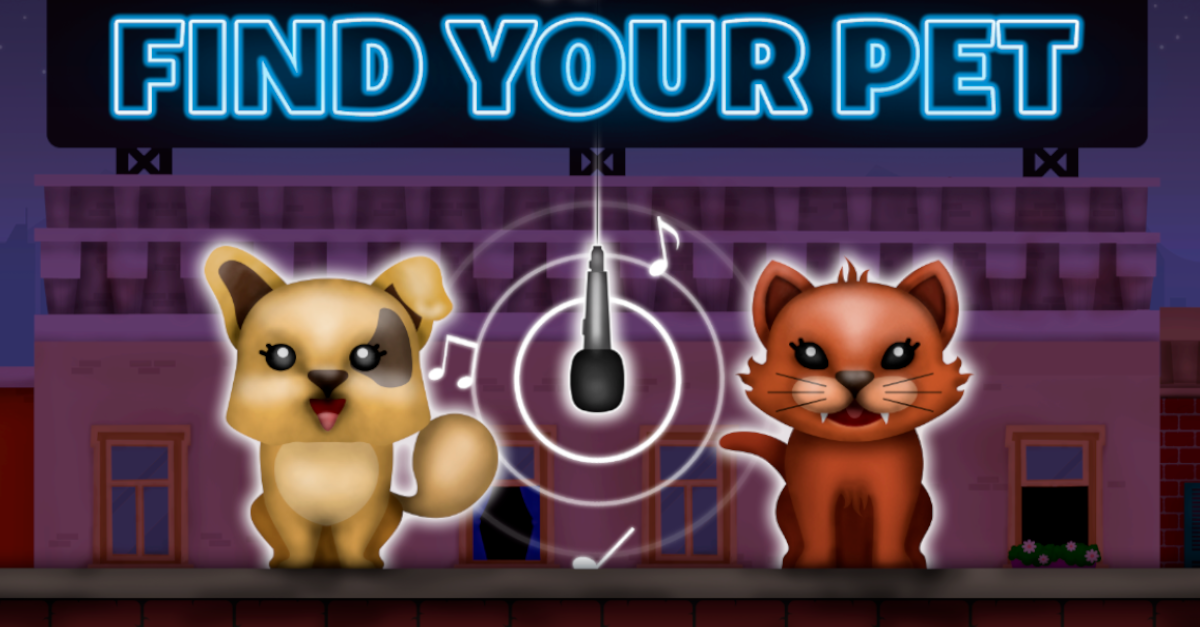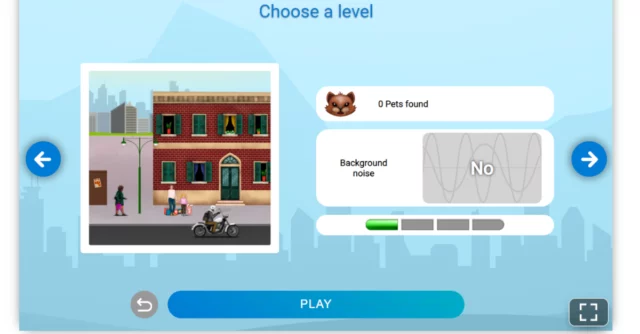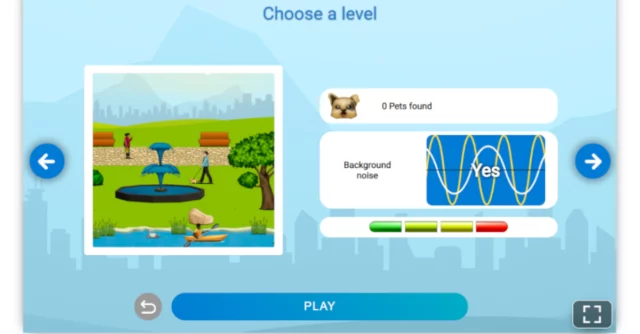
Find Your Pet – A Robust Must-Try Brain Game
CogniFit’s Find Your Pet Brain Game – Click on areas of the screen until you hear the bark or meow of your fur baby. Sounds simple, right? But did you know that while playing this game, you’re exercising the following brain functions: Auditory Perception, Focused Attention, Inhibition, Spatial Perception, Visual Scanning.
Let’s take a closer look.
Find Your Pet Breakdown
After an audio check, you’ll find yourself on the main game page. Here, you can choose the level of difficulty. As with all game, it’s a good idea to try out the lower levels first to get a feel for what’s going on.
Once in the game, you find yourself in various landscapes with things like trees, people, vehicles, buildings etc. Simply move your mouse to push the magnifying glass around the screen. Click on any part of the landscape and you’ll hear a sound.

It could be the wind blowing, leaves rustling, birds chirping, horns honking, etc. But if it’s not the sound of your pet, move on and click other parts of the screen until you find the little guy.
The thing is, on the surface, it seems easy. But it can be quite tricky. And the harder the level, the more noise distractions and a greater number of obstacles there will be. This means the more concentration and patience you’ll have to muster.
But what parts of the brain does Find Your Pet help with? Here’s a rundown…
Auditory Perception
Let’s say the phone rings. You pick it up and it’s your friend on the other end. What you’ve just done might seem like a very simple thing. However, a flurry of brain activity happened in mere milliseconds.
First, the audio waves reach your ears and then activate certain cells in the inner ear. The information is then sent to areas of the brain where it can distinguish things like timbre, tone, intensity, and duration of what you just heard.
But that’s not all that must happen in Auditory Perception.
First, we must be able to “detect” the sound. For example, some waves might be too quiet or far away for us to hear. Next, we need to “discriminate.” This means we need to pick out the sound from all the other noise clutter around us. Then, our brains need to “recognize” what we are hearing. Is it a guitar or someone talking? Finally, we need to be able to understand the sound’s meaning. For example, the ring of a bell at school tells us that class is over.
A lot of people link Auditory Perception problems with deafness. But that’s not all.
- There’s “amusia” – where people can’t recognize music.
- Musical hallucination – where people hear music that isn’t there.
- Tinnitus – a constant ringing in one’s ears
- And so much more.

Focused Attention
In short, Focused Attention means someone is able to concentrate on one thing for however long is needed. This can include being aware of driving conditions, to internal signals of know when it’s time to have a drink.
Types of attention include…
- Arousal: How alert we are, whether we are tired or full of energy.
- Focalized Attention: The ability to focus our attention on a stimulus.
- Sustained Attention: The ability to focus on that stimulus or activity over a long period of time.
- Selective Attention: How well we can focus when there are distractions around us.
- Alternating Attention: If we can change focus between different tasks.
- Divided Attention: How well we can pay attention to two things at once.
We all know that things like ADD, ADHA, schizophrenia, Alzheimer’s Disease, or strokes can cause attention disorders. However, things like severe lack of sleep or anxiety disorders can cause all kinds of problems with focus.
Inhibition
Have you ever been driving, and someone cut you off? Did you immediately pound on your horn and start yelling in a fit of rage? Or did you try to remain calm and focus on road safety?
Inhibition is one of our brain’s “executive functions” that helps us controls impulsive behavior and react with reason and attention instead.
Those with poor Inhibition have poor attention spans, hyperactivity, and forms of uncontrollable behavior.

Spatial Perception
This brain function basically allows us to use internal and external abilities to be aware of our surroundings. Without it, we would have a hard time walking upstairs or even turning a doorknob. It’s a particularly important function to have in order to be a safe driver.
Visual Scanning
If you like playing sports, you need to be able to scan the field quickly to know what to do next. Or, maybe you’re in a hurry in the supermarket. You need to grab the things on your list as fast as possible. Things like this are possible because of the brain’s ability to Visually Scan.
But in order to do this, our minds have to go through a certain process…
- Selective and Focused Attention: You need to be aware of whatever “stimulus” in order to find it. Selective attention, however, is the ability to pay attention to a single stimulus when there are distractions around you.
- Visual Perception: This makes it possible to distinguish, identify, and interpret shapes, colors, and lights. This is when you make sense of the information that you receive from your eyes.
- Recognition: Comparing the visual information you receive to determine whether you have prior experience with this info.
- Visual Scanning: Looking through all or part of your field of view to try to compare what you’re seeing to what you’re looking for. You will stop looking as soon as you recognize the information that you’re searching for.
The sequence of Visual Scanning is a delicate dance of brain processes. If even one is altered or damaged, it can be hard or even impossible to find what you’re looking for.
Find Your Pet Conclusion
Find Your Pet seems simple on the surface. But after seeing all the brain functions you exercise while playing, we now see that is a rather robust game. And one worth adding to your weekly brain game plan!














